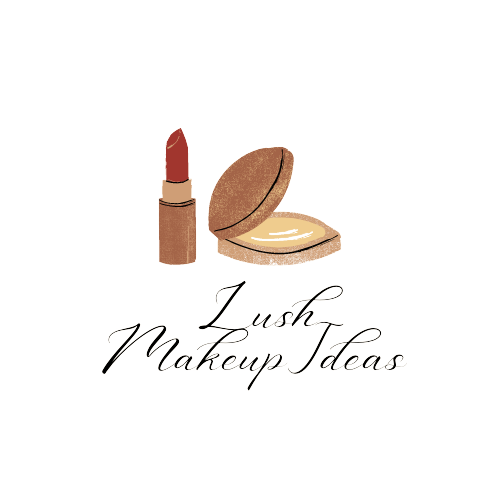So, you’re interested in becoming a makeup artist? Well, you’ve come to the right place! In this article, we’ll guide you through the exciting journey of becoming a makeup artist. Whether you’re an aspiring professional or just want to enhance your own makeup skills, we’ve got you covered. Stay tuned to discover some valuable tips and insights that will help you kickstart your makeup artist career.
If you’re wondering where to start or what skills are essential to become a makeup artist, we’ve got all the answers for you. In this article, we’ll be diving into the world of makeup artistry, covering everything from the basic tools you’ll need to advanced techniques and industry knowledge. We’ll also share tips on building your portfolio, networking, and even finding job opportunities. By the end of this article, you’ll have a clear roadmap and the confidence to pursue your passion for makeup artistry. So, let’s get started on this exciting journey together!
What Is a Makeup Artist?
Being a makeup artist involves much more than just applying makeup. As a makeup artist, you have the opportunity to create beautiful and transformative looks on clients of all ages and backgrounds. Whether you’re working on a fashion shoot, a wedding party, or a theater production, your skills and artistry can truly shine. In this article, we’ll explore the definition of a makeup artist, the responsibilities they have, and the skills needed to become successful in this field.
Definition of a makeup artist
A makeup artist is a professional who specializes in the application of cosmetics to enhance a person’s appearance. They work in various industries, such as fashion, film, television, theater, and bridal. Their main goal is to make their clients look and feel their best by creating unique and personalized makeup looks.
Responsibilities of a makeup artist
As a makeup artist, your responsibilities may vary depending on the industry you work in. However, some common tasks include:
- Consulting with clients to understand their desired look
- Analyzing and assessing the client’s skin type, facial structure, and undertones
- Applying makeup products, such as foundation, eyeshadow, lipstick, and blush
- Utilizing techniques like highlighting and contouring to enhance facial features
- Collaborating with hairstylists to create cohesive looks
- Ensuring the makeup application is long-lasting and suitable for the occasion or environment
- Adapting makeup techniques for different skin tones and ages
- Providing touch-ups and maintaining makeup throughout events or shoots
- Maintaining a clean and organized makeup kit
- Staying updated with current makeup trends and techniques
Skills needed to become a makeup artist
To become a successful makeup artist, there are several essential skills you should possess:
- Creativity: Makeup artistry involves thinking outside the box and creating unique looks. You should be able to translate your client’s vision into a stunning makeup application.
- Attention to detail: Precise application and attention to detail are crucial for achieving flawless makeup looks. From perfectly blended eyeshadow to well-defined brows, every aspect of the makeup should be carefully executed.
- Color theory: Understanding color theory is essential for matching foundation shades to different skin tones and creating cohesive makeup looks. Knowing how to complement undertones and create the desired effect is a valuable skill.
- Communication: As a makeup artist, you will interact with clients regularly. Being able to effectively communicate and understand their preferences is key to delivering the desired outcome.
- Time management: Depending on the industry you work in, you may be working with tight schedules and deadlines. Effective time management skills will help you ensure timely completion of makeup applications.
- Flexibility: Makeup artists often work in different locations and under various circumstances. Being adaptable and able to work in diverse settings is crucial for a successful career in this field.
- Hygiene and sanitation: Maintaining high standards of hygiene and sanitation is important when working with clients. Properly sanitizing your tools and products helps prevent contamination and ensures the safety of your clients.
Education and Training
While formal education is not always a requirement to become a makeup artist, it can provide a solid foundation and enhance your credibility in the industry. Here are some education and training options to consider:
Formal education for makeup artists
Some universities and colleges offer programs specifically focused on makeup artistry. These programs often cover a wide range of topics, including color theory, skin analysis, and application techniques. Completing a formal education program can provide you with a recognized credential and a comprehensive understanding of the field.
Cosmetology programs
Another option is to enroll in a cosmetology program. These programs typically cover a broader range of beauty-related subjects, such as hair care, skincare, and nail care. While makeup artistry may not be the sole focus, you’ll gain a well-rounded education in the beauty industry.
Makeup artistry certifications
Many specialized makeup schools and academies offer certification programs. These programs are often shorter in duration and focus specifically on the art of makeup application. While not required, obtaining a makeup artistry certification can demonstrate your dedication and expertise to potential clients or employers.
Online courses and tutorials
For those who prefer a more flexible and self-paced learning approach, online courses and tutorials can be a great option. Many professional makeup artists create online content, including video tutorials and step-by-step guides, allowing you to learn at your own convenience. Additionally, some online platforms offer certification programs that can be completed remotely.

This image is property of i.ytimg.com.
Building a Makeup Kit
Having a well-stocked and organized makeup kit is essential for any makeup artist. Here are some tips for building and maintaining your makeup kit:
Essential makeup products and tools
Every makeup artist should have a collection of essential makeup products and tools. These include foundation, concealer, eyeshadow palettes, blushes, lipsticks, brushes, and sponges. Invest in high-quality products that cater to a variety of skin types and tones.
Choosing the right foundation
Foundation is a key component of any makeup look. It’s important to have a diverse range of foundation shades to match various skin tones. Additionally, consider factors such as coverage, finish, and compatibility with different skin types when selecting foundations for your kit.
Different types of brushes and their uses
Brushes are crucial tools for achieving precise and professional-looking makeup applications. It’s essential to have a variety of brushes in different shapes and sizes to cater to different areas of the face. Some common brushes include foundation brushes, eyeshadow brushes, blush brushes, and lip brushes.
Sanitizing and organizing your makeup kit
As a makeup artist, hygiene is of utmost importance. Regularly sanitize your makeup products and brushes to prevent the spread of bacteria. It’s also essential to keep your makeup kit organized so that you can easily access the products you need during a makeup application.
Understanding Skin Types and Undertones
Understanding the characteristics of different skin types and undertones is crucial for achieving a flawless makeup application. Here’s what you need to know:
Identifying different skin types
There are five main skin types: normal, dry, oily, combination, and sensitive. Understanding how each type behaves and reacts to certain products helps you choose the appropriate makeup formulas and techniques.
Normal skin is well-balanced and not too dry or oily. Dry skin lacks moisture and often feels tight and flaky. Oily skin produces excess sebum and is prone to shine and breakouts. Combination skin has both oily and dry areas. Sensitive skin is easily irritated and may react negatively to certain ingredients.
Determining undertones
Undertones refer to the underlying hues of the skin, which can be categorized as warm, cool, or neutral. Warm undertones have a yellow or golden hue, cool undertones have a pink or bluish hue, and neutral undertones have a balance of both warm and cool tones.
Determining undertones helps you select the appropriate foundation and concealer shades for your clients. Understanding how undertones interact with different colors can also help you create harmonious makeup looks.
Matching foundation and concealer shades to skin tones
When matching foundation and concealer shades to skin tones, it’s important to consider both the depth and undertone of the skin. Depth refers to the lightness or darkness of the skin, while undertone determines the underlying hue. Choosing the right shade ensures a seamless and natural-looking makeup base.
Always test the foundation and concealer on the client’s jawline or neck to ensure a proper match. Consider factors such as natural lighting and the client’s personal preferences when selecting shades.
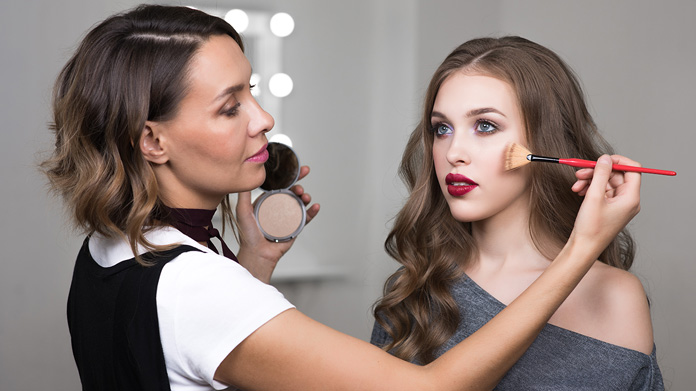
This image is property of howtostartanllc.com.
Enhancing Facial Features
As a makeup artist, your goal is to enhance and bring out the best features of your clients. Here are some techniques to achieve this:
Highlighting and contouring techniques
Highlighting and contouring are popular techniques used to enhance and define facial features. Highlighting involves using a lighter shade of makeup to bring forward certain areas, such as the cheekbones and brow bone. Contouring, on the other hand, uses a darker shade to create shadows and add dimension to the face.
By mastering these techniques, you can create the illusion of more defined cheekbones, a slimmer nose, and a sculpted jawline.
Accentuating eyes with eyeshadow and eyeliner
The eyes are often considered the focal point of a makeup look. Eyeshadow and eyeliner can be used to enhance the shape and color of the eyes. Different eyeshadow shades can make the eyes appear larger, more defined, or more vibrant.
Eyeliner can be used to create various effects, such as a classic winged eyeliner or a smokey and smudged look. Experimenting with different colors and techniques can help you create diverse eye makeup looks.
Creating fuller lips with lipstick and lip liner
Full lips are often desired by many clients. Lipstick and lip liner can be used to create the illusion of fuller lips. Choosing the right shades and applying them thoughtfully can enhance the natural shape of the lips and add volume.
Lip liner can help define the lip shape and prevent lipstick from bleeding. Applying a lighter shade of lipstick in the center of the lips can create a plumping effect.
Creating Different Makeup Looks
As a makeup artist, versatility is key. You should be able to create a variety of makeup looks to cater to different occasions and client preferences. Here are some popular makeup looks you should familiarize yourself with:
Daytime natural makeup
Daytime natural makeup aims to enhance the client’s features in a subtle and natural way. This look often focuses on achieving a flawless complexion, soft eyeshadow, and a light lip color. It is suitable for everyday wear and professional settings.
Smokey eyes for evening looks
Smokey eyes are a timeless and sultry look that is perfect for evening events and special occasions. This look involves blending darker eyeshadow shades to create a smokey and smoldering effect. Pair it with a nude or bold lip color for a dramatic finish.
Bridal and special occasion makeup
Bridal and special occasion makeup often requires a balance between natural and glamorous looks. Bridal makeup aims to enhance the bride’s features while still looking timeless and elegant. It often involves soft and romantic eyeshadow colors, natural-looking foundation, and long-lasting products.
Avant-garde and creative makeup
Avant-garde and creative makeup embraces bold and artistic expressions. It involves using unconventional colors, textures, and application techniques to create unique and avant-garde looks. This type of makeup is often seen in editorial shoots, runway shows, and artistic collaborations.
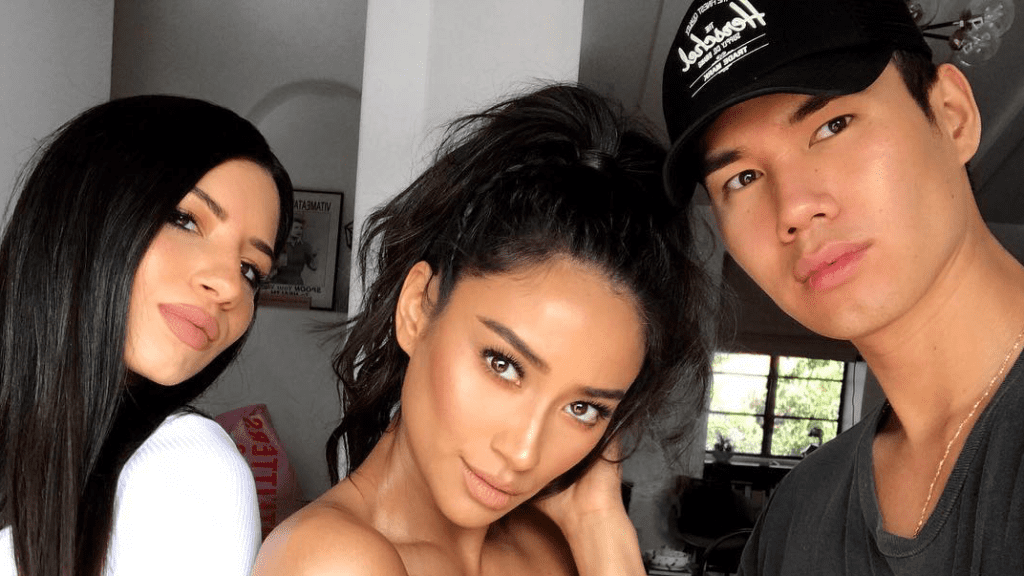
This image is property of assets.teenvogue.com.
Working with Different Clients
As a makeup artist, you will encounter a diverse range of clients with varying preferences and needs. Here are some tips for effectively working with different clients:
Consultations and understanding client preferences
Before starting any makeup application, it’s important to have a thorough consultation with your client. Take the time to understand their vision, preferences, and any specific requests they may have. This ensures that you deliver a look that aligns with their expectations.
Adapting makeup techniques for different skin tones and ages
Makeup techniques may vary depending on the client’s skin tone and age. Darker skin tones may require different color schemes and product formulations, while mature skin may benefit from hydrating and anti-aging products. Being able to adapt your techniques accordingly ensures that your makeup looks flattering on every client.
Dealing with client requests and feedback
Clients may have specific requests or preferences regarding their makeup look. It’s important to listen attentively and accommodate their requests to the best of your ability. Additionally, be open to feedback and willing to make adjustments if necessary. Maintaining good communication and a positive attitude is key to building long-lasting client relationships.
Building a Portfolio and Gaining Experience
Building a portfolio is essential for showcasing your skills and attracting potential clients or employers. Here are some tips for creating a professional portfolio:
Building a professional portfolio
Include high-quality photos of your best work in your portfolio. Choose a variety of makeup looks that showcase your versatility and ability to cater to different client preferences. Ensure that the lighting and composition of the photos highlight the makeup application effectively.
Networking with photographers, models, and other industry professionals
Networking is crucial in the makeup industry. Connect with photographers, models, hairstylists, and other industry professionals to expand your network and collaborate on projects. Attend industry events, workshops, and trade shows to meet and exchange ideas with like-minded individuals.
Volunteering or assisting established makeup artists
Gaining practical experience is vital for honing your skills as a makeup artist. Offer your services as a volunteer or assistant to established makeup artists. This allows you to learn from their expertise, gain exposure to different working environments, and add valuable experience to your resume.
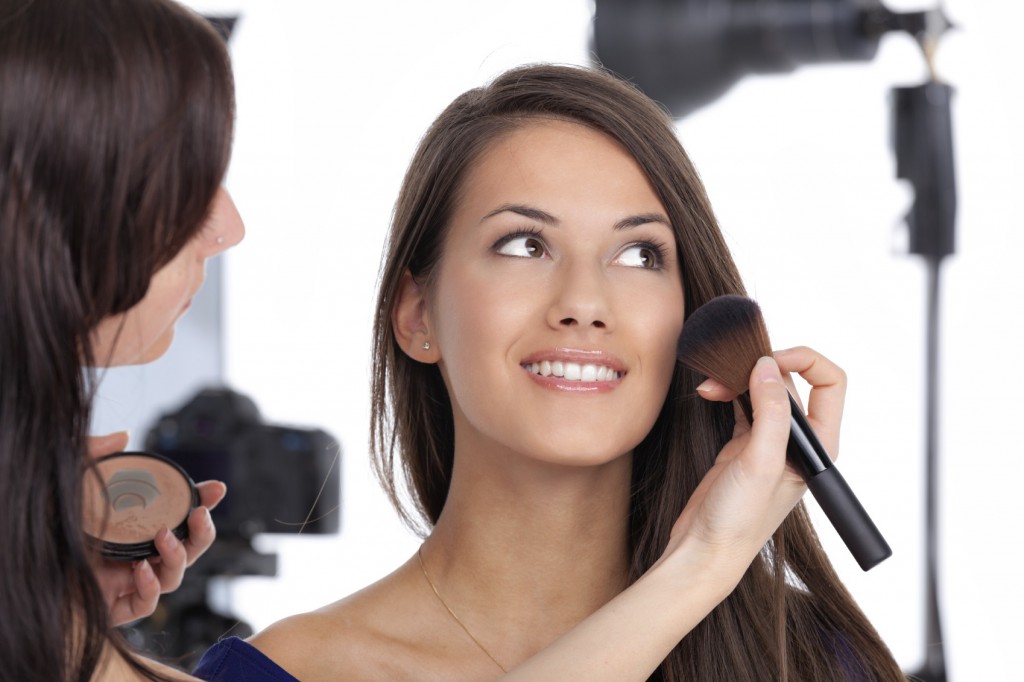
This image is property of www.salonsuccessacademy.com.
Finding Employment
Once you have built your skills and portfolio, it’s time to find employment opportunities. Here are some common avenues for makeup artists:
Working in a salon or beauty counter
Salons and beauty counters often hire makeup artists to provide makeup services to their clients. This can be a great way to gain practical experience, build clientele, and showcase your skills. It also offers the opportunity to work with a diverse range of clients and collaborate with other beauty professionals.
Freelancing as a makeup artist
Many makeup artists choose to work as freelancers, allowing them the freedom to work on various projects and clients. Freelancing offers flexibility and the opportunity to build a personal brand. However, it also requires self-promotion, client acquisition, and the ability to manage your own business.
Working in the film, television, or fashion industry
The film, television, and fashion industries often employ makeup artists to create looks for actors, presenters, and models. Working in these industries can be exciting and fast-paced, but it may also require additional skills, such as special effects makeup or knowledge of editorial trends.
Conclusion
Becoming a makeup artist requires passion, dedication, and a willingness to continuously learn and improve. By acquiring the necessary skills, building a strong portfolio, and gaining practical experience, you can embark on a fulfilling career in the world of makeup artistry. Whether you choose to work in a salon, freelance, or venture into the realms of fashion and entertainment, you have the opportunity to create stunning and transformative looks that leave a lasting impact on your clients’ lives. So, embrace your creativity, invest in your education, and start your journey towards becoming a successful makeup artist.
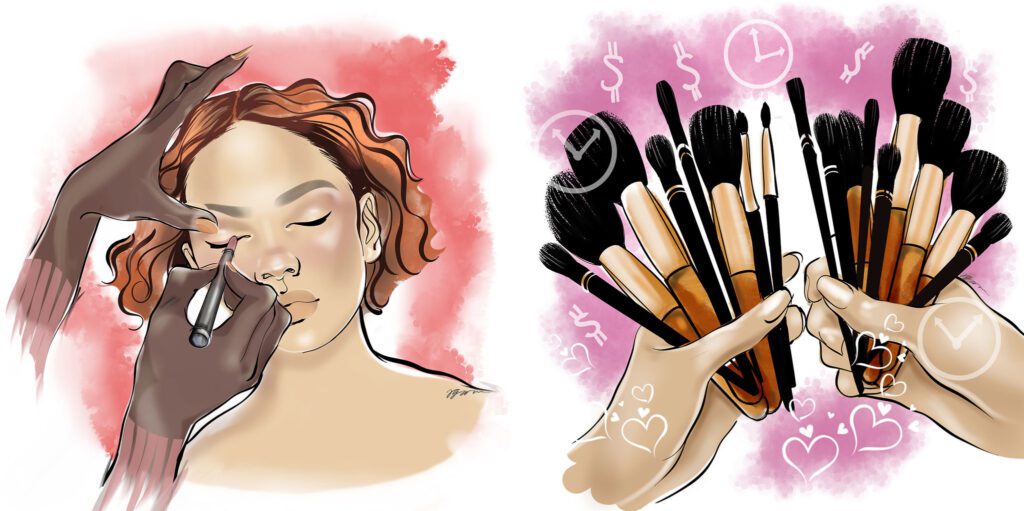
This image is property of static01.nyt.com.
